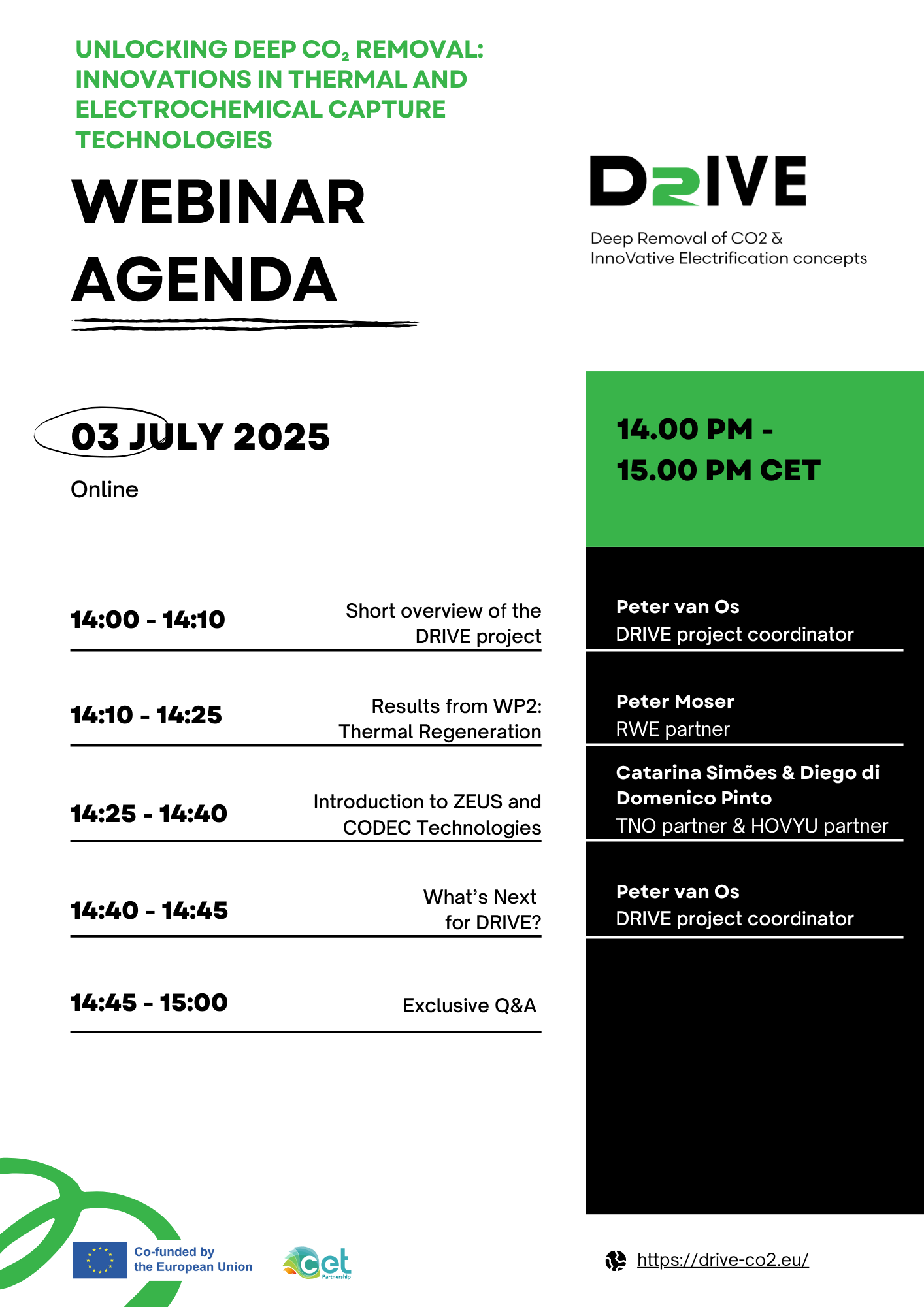Date: 03 July 2025
Time: 14:00–15:00 CET
Format: Online | Free registration
👉 Register here
The DRIVE project (Deep Removal of CO₂ & InnoVative Electrification concepts) is proud to announce its first public webinar, showcasing breakthrough progress in its mission to develop high-efficiency CO₂ capture solutions for hard-to-abate industries.
This 1-hour online event will provide an exclusive look into DRIVE’s early achievements in thermal and electrochemical CO₂ capture technologies, aiming to inspire knowledge exchange and connect with industrial, research, and policy stakeholders across Europe and beyond.
🔍 What to Expect
The webinar will feature insights from key partners involved in developing and testing cutting-edge carbon capture methods. Participants will gain a better understanding of how deep CO₂ removal (≥98%) is technically feasible, economically viable, and environmentally essential for reaching climate neutrality.
💡 Why This Matters
DRIVE aims to push carbon capture to new performance frontiers, developing technologies that enable:
- Cost-effective deep removal of CO₂ from cement, power, and waste-to-energy sectors
- Electrified regeneration techniques that support industrial decarbonisation
- Validated models for techno-economic and environmental assessment
In this webinar, you’ll hear directly from the technical teams shaping this transformation and discover how DRIVE complements EU climate goals, CETP ambitions, and global net-zero targets.
👥 Who Should Attend?
- Industrial stakeholders (cement, energy, waste sectors)
- CCUS technology developers & researchers
- Climate and energy policymakers
- Investors in clean tech & negative emissions
- Environmental NGOs and climate innovation followers
📣 Stay Engaged
This webinar is part of a wider outreach effort by the DRIVE consortium to share results, gather feedback, and build a strong innovation network for CO₂ deep removal.
📺 A full recording will be available after the event on our YouTube channel and project website.
👉 Don’t miss it – register here and be part of Europe’s low-carbon future.

